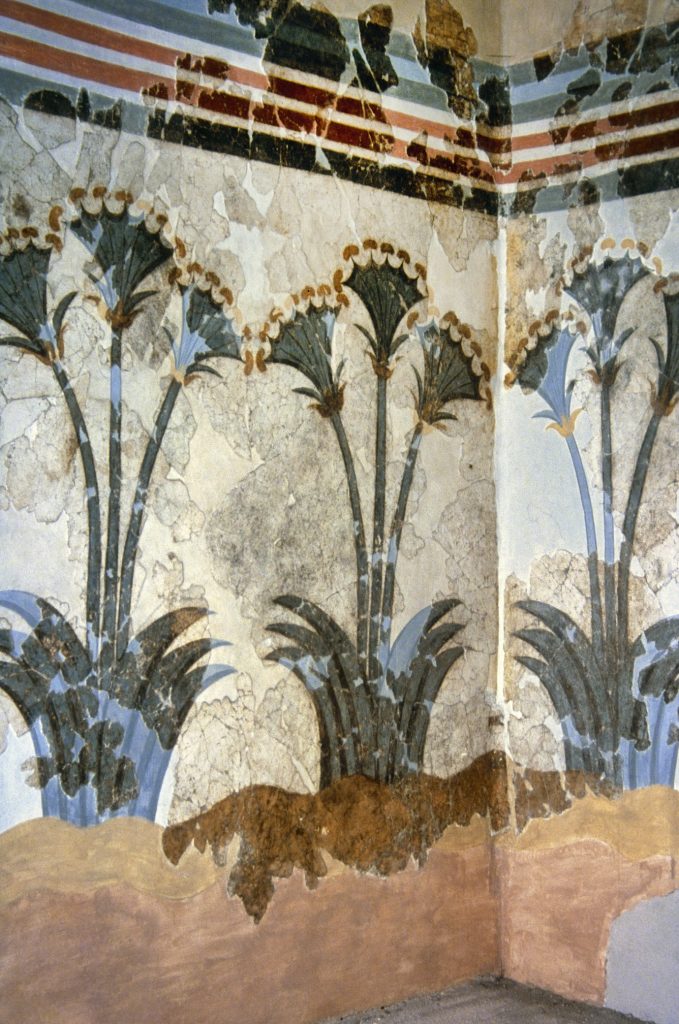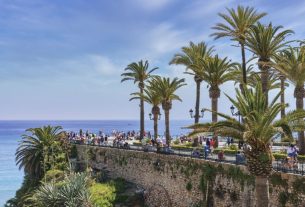Around the 17th century BC, a massive volcanic eruption on the island of Santorini wiped out the ancient city of Akrotiri. It was only rediscovered in 1967 and ever since then more and more startling discoveries about an ancient high culture have emerged. Some even believe that Akrotiri may actually have been the legendary Atlantis.
It is fair to say that the island of Santorini in the Cyclades is one of the top tourist destinations in Greece. But few perhaps know that it is also one of the most historic places in the country. A few kilometers from the capital Firá there is an archaeological site that may seem unspectacular at first glance. But these are the remains of the ancient lost city of Akrotiri. And this is not only often referred to as the “Pompeii of Greece” or the Aegean, but it could also be the origin of a thousand-year-old legend.
According to “Greek news agenda“Historic Akrotiri can safely be described as one of the earliest sites of Greek high culture. As excavations underway here since 1967 show, the city was unusually progressive for its time. So there were not only buildings of up to three floors and paved streets, but also a sewage system and probably also toilets in the houses. Since its formation around 3500 BC, the place has become one of the most important trading centers in the Aegean, maintaining relations not only with mainland Greece, but also with Syria and Egypt.

No bodies found
The murals, furniture and household items found indicate that the inhabitants of Akrotiri must have lived a very luxurious life. But around 1600 BC the city literally disappeared from the face of the earth. Wiped out by a huge natural disaster. A volcanic eruption now known as the “Minoan Eruption” not only destroyed Akrotiri but also the entire island of Santorini, also devastating places on the neighboring island of Crete. The effects could be felt as far away as Egypt and the island sank under a meter thick layer of ash.
The eruption was also the end of Akrotiri. As in a time capsule, the city has been buried and preserved under the blanket of ash. Unlike Pompeii in Italy, however, no bodies have been found here. Scientists concluded that the volcanic eruption probably didn’t come as a complete surprise to the residents of Santorini. There had already been a series of massive earthquakes before that. This probably caused the inhabitants of Akrotiri to leave their homeland. However, the fact that so many well-preserved items were found in the ruined city indicates that many believed they would soon return.

Was Akrotiri the real Atlantis?
To the “mdrBut there may be another reason why no human remains have ever been discovered in Akrotiri. As a result, the people on Santorini could have simply been completely burned out. Akrotiri fell into oblivion until 1967 when the first excavations began under Professor Spyridon Marinatos and the Archaeological Society of Athens. The finds, especially the artistically designed frescoes in almost every house, amaze scientists to this day. The ceramics discovered are also second to none. But it is another circumstance that makes Akrotiri talk about the city.
Because over and over again in the past the theory has emerged that the place could be the current, legendary Atlantis. Strong WORLD numerous descriptions of the mythical place by the Greek philosopher Plato show striking parallels with Akrotiri. Not least the fact that, according to legend, even Atlantis was swept away by earthquakes and floods. When the Thera volcano in Santorini erupted, the eruption caused tsunami waves at least nine meters high.
The myth brings profit
So far, however, there are no really hard facts for the theory. Plato, in his legend of Atlantis, placed a temple of Poseidon in the center of the city, dedicated to the homonymous Greek god of the sea. So far, however, no one has been found on the Akrotiri excavation area, which now covers two hectares, even if the excavations will go on for a long time to come. Despite this, or because of it, the people of Santorini obviously profit from the myth of Atlantis. In addition to the Museum of Prehistoric Thera (as Santorini used to be called) there is also the “Museum of the Lost Atlantis Experience“.
Visitors can, among other things, experience the massive volcanic eruption in cinemas. And of course, Plato’s descriptions of Atlantis are not lacking either. The steep admission price of 14 euros for adults shows how much can be earned with this fairy tale, children up to 12 still pay seven euros. The Akrotiri archaeological site itself is open from 8am to 8pm until the end of October and entry costs 12 euros. A visit here is not only an impressive journey through time, but also a very personal search for the traces of one of the greatest legends of all. The legend of the lost city of Atlantis.




